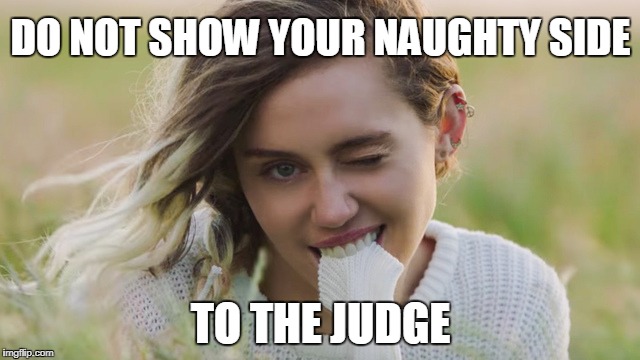
On the Internet, being chaste is gold
If you’re over 25 years old, you will remember when a video with intimate scenes of the Brazilian model Daniela Cicarelli and her then boyfriend, Renato Alfieiro Malzoni Filho, on the beach, went viral. It was September 2006. In 2007, the Justice determined the blocking of YouTube on the country, understanding that the website was not being diligent to remove the many versions of the video that were still being posted (the block lasted four days — you can read more about it at bloqueios.info).
The case went through tortuous roads, between embargoes and interlocutory appeals. At the time, the Justice understood that YouTube should pay a fine of R$250.000 per day of noncompliance with the order for removing the videos. Last month, the STJ issued another decision on the case, arguing that each of the affected parties, Daniela and Renato, would receive a total of R$250.000. If this decision were sustained, today the fine owed by Google would exceed R$160 million, which did not seem reasonable. Despite the lowering of the fine, the understanding that there was damage to the couple’s image and intimacy was kept, independently of the acts exercised in public. This discussion became a hot topic when the videos went viral.
Ten years went by. Last month, a judge from São Paulo issued a decision establishing values in another case also involving celebrities, gender and sexuality. The actress and writer Fernand Young asked for an indemnity for material and moral damages due to a violation of her right to publicity. In March 2015 she posted a photo on Instagram and a user commented: “It’s better to download free pictures from playboy and admire you as the character on the magazine: a lesbian bitch”.
In this case, the judge understood that there was no material damage and that the moral damage should be of R$5000. What draws the attention on this decision is that the judge argued his decision for a “lower” fine based on the victim’s “reputation”:
“the value also considers the fact that the plaintiff did artistically pose naked, thus her reputation is more flexible, moreover because she subjected herself to posting a photo making an obscene gesture, posted a photo showing her breasts and did not limit herself to making a defense, calling third-parties ‘dumb’”, and he goes on:
“well, a woman with so many attributes as the plaintiff claims to have should demonstrate, as an influencer, a little more respect. There are moral values that should govern society and that, most often, as days pass, are ignored in favor of an alleged relativity applied to the social sciences, generating the current chaos”.

In 2016, we published a book about the judicial decisions on the dissemination of NCII, a practice also known as revenge porn. Our research showed that, in the case of criminal trials, when we are dealing with a crime with a minimal and a maximum penalty, considerations about the victim do not appear a lot. But in the cases of indemnity, the law does not establish any parameters for the values. It’s then that all sorts of personal considerations appear, and that sexism and discrimination appear the most.
For instance, we saw discussions about whether or not a victim deserved a lower indemnity because after all, she would have “contributed to the nonconsensual dissemination” when she sent her images to someone specific (these are arguments used by Internet platforms, seeking to not be liable). We also saw judges understanding that the fact that a woman is a lawyer, or has another prestigious profession, is an important factor to increase the value of the indemnity — on contrario sensu, less privileged women would deserve a lower indemnity. In fact, when comparing the values granted in indemnities and fines, Daniela Cicarelli’s case was quite deviating, since other values would vary from R$2000 to R$15000.
How do we measure the damage suffered by someone who has their image exposed on the Internet due to gender and sexuality issues? What should a judge take into account?
Measuring a moral damage suffered by someone in monetary values is always complex, and this is already debated a lot in law circles. But in cases involving sexuality, adopting the key of honor and reputation as a solution is a big problem. This has allowed a judge to discuss the self-determination whoever has over their own body — which is even more problematic when dealing with women and sexual minorities which, in our context, are more subjected to revictimization based on arguments that blame them for the exercise of their sexuality. Problematic, thus, because the criteria used to measure the moral damage in these cases, unfortunately, can be “flexible” due to the persistence of sexism in our social relations.
STJ decision on the Cicarelli case here [in Portuguese].
Decision on the Fernanda Young Case here [in Portuguese].
By Mariana Giorgetti Valente and Natália Neris
Translation: Ana Luiza Araujo